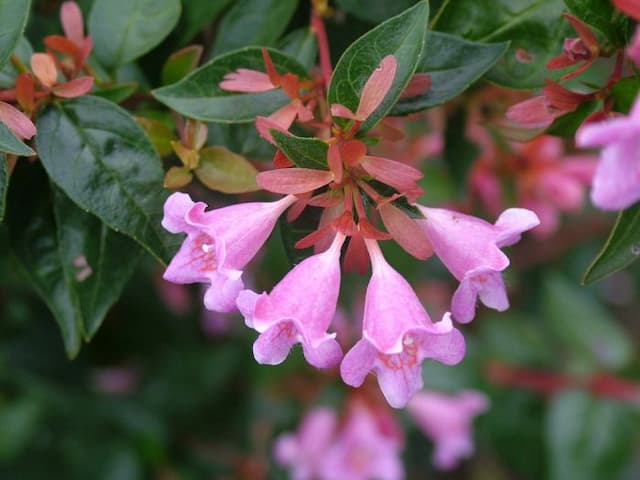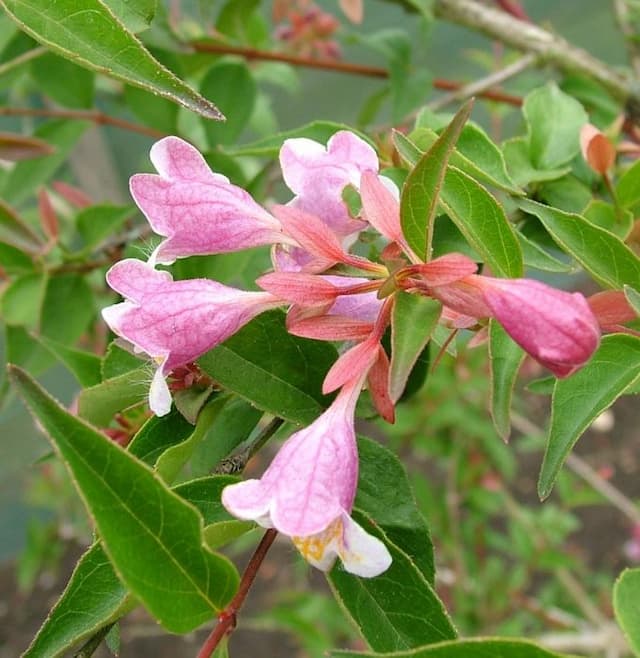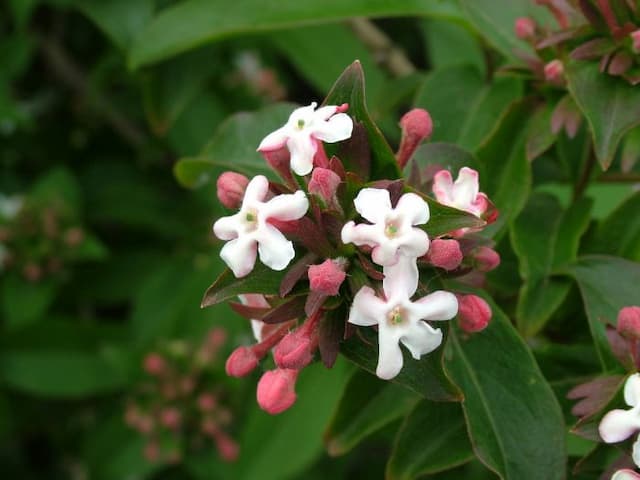Pincushion Flower Scabiosa caucasica 'Clive Greaves'

ABOUT
Scabiosa caucasica 'Clive Greaves', commonly known as the Caucasian Pincushion Flower, is a perennial plant known for its attractive and distinctive flowers. The plant sports a rosette of lance-shaped, slightly hairy leaves which are typically gray-green in color, providing a soft-textured backdrop for the blooms. The Caucasian Pincushion Flower is notable for its large, frilly flowers that resemble a pincushion with pins sticking out. These flowers bloom in a beautiful shade of lavender blue, with a hint of violet, and feature a central cushion surrounded by an outer ring of frilly petals. Each flower is borne atop long, slender stems that rise above the foliage, giving them a floating effect in the garden. The central part of the flower, or the 'pincushion', is actually a dense cluster of tiny stamens and pistils, which are surrounded by the more prominent and decorative petals. The blooms are highly attractive to butterflies and bees, as they offer a rich source of nectar. This cultivar is appreciated not only for its ornamental value but also for its long blooming period, during which it graces gardens with its charming flowers from early summer to fall. The Caucasian Pincushion Flower's delightful hues and intricate flower structure make it a favorite for cut flower arrangements and an eye-catching addition to perennial borders and cottage gardens.
About this plant
 Names
NamesFamily
Caprifoliaceae.
Synonyms
Caucasian Pincushion Flower, Caucasian Scabious, Clive Greaves Pincushion.
Common names
Scabiosa caucasica 'Clive Greaves'
 Toxicity
ToxicityTo humans
Scabiosa, commonly referred to by names such as pincushion flower or scabious, is not known to be toxic to humans. There is limited information on the toxicity of Scabiosa caucasica 'Clive Greaves'. Therefore, it is generally considered not to be poisonous, and ingesting parts of this plant is unlikely to lead to adverse health consequences for humans. However, as with any plant, individual allergies or sensitivities are possible, and it is always best to err on the side of caution and not consume plants not intended for human consumption.
To pets
The pincushion flower, including the Scabiosa caucasica 'Clive Greaves', is not known to be toxic to pets such as dogs and cats. There is no well-documented evidence indicating that pets ingesting parts of the Scabiosa caucasica 'Clive Greaves' will experience poisoning. However, individual pets may have sensitivities or reactions to plants that are not commonly toxic. It is recommended to monitor pets to prevent them from eating plants, as they can sometimes cause gastrointestinal upset even if not toxic.
 Characteristics
CharacteristicsLife cycle
Perennials
Foliage type
Deciduous
Color of leaves
Green
Flower color
Lavender
Height
2 feet (60 cm)
Spread
1 foot (30 cm)
Plant type
Herb
Hardiness zones
3
Native area
Caucasus
Benefits
 General Benefits
General Benefits- Attracts Pollinators: The plant is known to attract bees, butterflies, and other beneficial insects to the garden, which can help pollinate other plants.
- Aesthetic Appeal: Scabiosa caucasica 'Clive Greaves' produces beautiful, lavender-blue flowers that can add color and visual interest to garden landscapes.
- Long Blooming Season: This perennial has a long flowering period, often lasting from early summer into the fall, providing a sustained display of blooms.
- Drought Tolerance: Once established, it has good drought tolerance, making it suitable for gardens with low water availability.
- Low Maintenance: It is generally low maintenance, requiring minimal care once it is established in suitable conditions.
- Cut Flower Use: The attractive flowers are excellent for cutting and using in floral arrangements, holding up well in vases.
- Garden Design Versatility: It can be incorporated into various garden styles, including cottage gardens, borders, and wildflower meadows.
- Deer Resistance: Scabiosa caucasica 'Clive Greaves' is known to have some resistance to deer, which can be beneficial in areas where deer browsing is a problem.
 Medical Properties
Medical PropertiesThis plant is not used for medical purposes.
 Air-purifying Qualities
Air-purifying QualitiesThis plant is not specifically known for air purifying qualities.
 Other Uses
Other Uses- Pincushion flowers can be used as natural fabric dyes, giving a range of colors from greens to yellows depending on the mordant used.
- The flower heads, when dried, can be incorporated into potpourri mixes for their shape and long-lasting nature.
- Artists can use the intricate structure of the pincushion flower head as inspiration for patterns in designs and artwork.
- Culinary enthusiasts sometimes crystallize the petals for decorative edible garnishes on cakes and desserts.
- The plant's lengthy stems can be used in weaving or basket-making as accents or decorative elements.
- Photographers often utilize the striking form of Scabiosa as subjects for macro photography to showcase their complex structure.
- These flowers can be used in educational settings to teach about pollination and the importance of flowers in ecosystems.
- The gentle fragrance of Scabiosa caucasica can be captured in homemade scented sachets for drawers and closets.
- Because of their attractive form, the seed heads can be used in arts and crafts, such as creating natural jewelry or decorative pins.
- Gardeners can cultivate Scabiosa caucasica specifically for the purpose of companion planting, to attract beneficial insects that aid in pollination and pest control.
Interesting Facts
 Feng Shui
Feng ShuiThe Pincushion Flower is not used in Feng Shui practice.
 Zodiac Sign Compitability
Zodiac Sign CompitabilityThe Pincushion Flower is not used in astrology practice.
 Plant Symbolism
Plant Symbolism- Admiration: Scabiosa, commonly referred to as the 'Pincushion Flower', often represents admiration due to its unique and attractive blooms that look like they are demanding attention and appreciation.
- Love: The intricate flowers of Scabiosa can also symbolize a deep and lasting love, particularly suggestive of the care it takes to grow and maintain the plant, reflective of the care one might put into a relationship.
- Purity: With its delicate and soft appearance, Pincushion Flowers can represent purity, echoing the clear, crisp aesthetic of the flower's form and color.
- Peace: The Scabiosa flower is often associated with peace and tranquility, which may stem from its use in traditional medicine and its calming presence in gardens.
- Beauty: As a garden plant prized for its beauty, the Pincushion Flower may symbolize the beauty of nature, art, or personal character.
 Water
WaterPincushion flower, commonly known as Scabiosa caucasica 'Clive Greaves', should be watered regularly to maintain moist soil, especially during the growing season in spring and summer. It's best to check the top inch of the soil; if it feels dry, then it's time to water. Depending on climate conditions, this might translate to watering once or twice a week. Provide approximately 1 to 1.5 gallons of water each time, ensuring even soil moisture but avoiding waterlogging. During the winter months, reduce watering frequency as the plant's water requirements decrease.
 Light
LightPincushion flower thrives best in full sun to partial shade conditions. A spot that receives direct sunlight for at least 6 hours a day is ideal. If planted in the garden, ensure it's in an area where it can receive ample morning sunlight, which is gentler, and partial shade in the harsher afternoon, especially in hotter climates.
 Temperature
TemperatureThe Pincushion flower prefers a temperate climate, performing best where temperatures range between 60°F and 75°F. It can survive minimum temperatures down to about 30°F, but frost can damage the plant. During the hot summer months, providing afternoon shade can prevent overheating if temperatures exceed the ideal range.
 Pruning
PruningPrune the Pincushion flower regularly to remove spent blooms and encourage further flowering. Deadheading can be done throughout the blooming season to maintain a neat appearance and promote continuous blooms. The best time to prune is right after a flush of blooms has faded, typically every few weeks during the blooming period.
 Cleaning
CleaningAs needed
 Soil
SoilThe pincushion flower prefers well-draining soil with a mix of loam, compost, and sand to ensure adequate drainage and fertility. The ideal soil pH for Scabiosa caucasica 'Clive Greaves' should be neutral to slightly alkaline, ranging from 6.6 to 7.5.
 Repotting
RepottingPincushion flowers do not require frequent repotting and should only be repotted every few years or when it's evident that the plant has outgrown its current container.
 Humidity & Misting
Humidity & MistingPincushion flowers prefer average humidity levels and do not require any special humidity considerations beyond typical room conditions.
 Suitable locations
Suitable locationsIndoor
Ensure a sunny spot, use well-draining soil, and water moderately.
Outdoor
Plant in full sun, well-drained soil; water regularly; protect from frost.
Hardiness zone
3-8 USDA
 Life cycle
Life cycleScabiosa caucasica 'Clive Greaves', commonly known as pincushion flower, begins its life cycle as a seed, which germinates in spring when the soil warms. Upon sprouting, the seedling develops a root system and foliage, entering a vegetative growth stage. As the plant matures, it develops flowering stems, with the blooming period typically occurring in late spring to summer, showcasing lavender-blue flowers attractive to pollinators. After pollination, the flowers produce seeds, completing the reproductive stage. The plant may enter a period of dormancy during the colder months, especially in zones where it is considered perennial. In the following growing season, the pincushion flower can either re-sprout from the existing root system or the cycle can begin anew from seeds produced in the previous season.
 Propogation
PropogationPropogation time
Spring-Early Summer
Scabiosa caucasica 'Clive Greaves', commonly known as Caucasian Pincushion Flower, is often propagated through seed. The most popular method of propagation for this plant is by sowing seeds indoors 6 to 8 weeks before the last spring frost date. To propagate, fill flats or pots with a seed starting mix and gently press the seeds into the soil surface, as they need light to germinate. Maintain the soil moisture and keep the temperature around 70°F (21°C). Seedlings will usually emerge in 2 to 3 weeks. After the risk of frost has passed and the seedlings have grown strong, transplant them to the garden spacing them about 12 inches (30 centimeters) apart to allow for growth.







![Himalayan honeysuckle [Golden Lanterns]](/_next/image?url=https%3A%2F%2Fplants-admin.emdemapps.com%2Fimages%2Fplants%2F%2Fimages%2F604b55302cc87.png&w=640&q=75)

